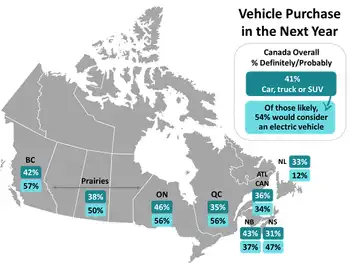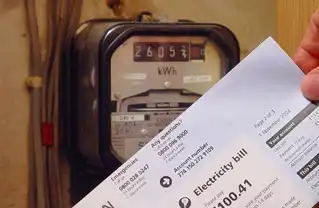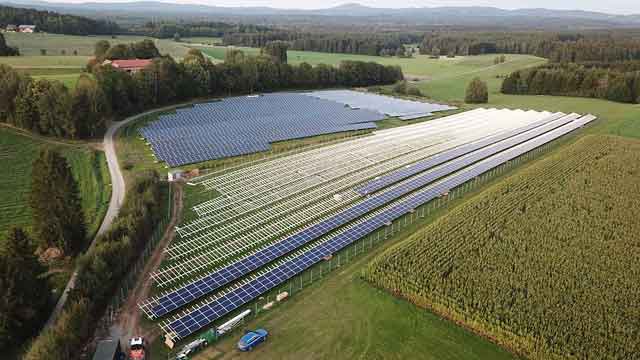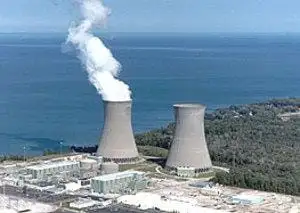Why is PEIÂ’s wind plan dying?
By Globe and Mail
Electrical Testing & Commissioning of Power Systems
Our customized live online or in‑person group training can be delivered to your staff at your location.

- Live Online
- 12 hours Instructor-led
- Group Training Available
The move would make the province a green powerhouse, and the North American jurisdiction with by far the highest proportion of wind-generated electricity. At the same time, PEI would become an energy exporter - despite having no other homegrown sources of power - by building additional wind projects to sell power into the New England market.
All this was to be accomplished by 2013, when the province would have 500 megawatts of wind turbines churning out power - a substantial amount for a tiny island province. Only Ontario, Quebec and Alberta would have had more.
Mr. Ghiz vowed that the $1-billion worth of wind farm and transmission construction would be the largest project on the island since the building of the Confederation Bridge.
Two years later, the plan is in disarray. While PEI tried to attract private developers to the province, several of their proposals demanded higher power prices than the province was willing to pay. The government and its utility rejected the offers because they would have driven up electricity prices, which are already the highest in Canada.
Currently, the government is in negotiations with two developers to build projects that will add just 30 MW to the 164 MW of wind power already in production in the province.
PEI's tarnished vision underlines the delicate economics of renewable energy around the world, where subsidies and high energy prices are often the keys to getting projects off the ground.
While there is tremendous pressure on governments to wean their power grids off fossil fuel, renewables are still an expensive alternative that can push up electricity prices. There is also an increasing public pushback against huge turbine developments - or other "clean" generation projects - near populated areas, forcing politicians to think twice. Just recently, the Ontario government backed down on a proposed natural-gas-powered electricity plan in the populous - and wealthy - Toronto suburb of Oakville, after a well-organized and intense public protest.
In PEI's case, a key problem was that expected North American "cap-and-trade" carbon-pricing policies did not come to pass, Energy Minister Richard Brown said in an interview at his office in Charlottetown. If they had, carbon credits associated with wind power would have made development on PEI much more viable, he said.
At the same time, the plunge of the global economy into recession didn't help. "Economic conditions went down the tubes, and that opened up a lot of excess power generation capacity," Mr. Brown said. Consequently, energy prices dropped, making wind less viable.
Still, "the plan is not dead... we are still committed to 500 MW of wind," Mr. Brown insists. The time frame has merely been extended until the economy turns around and energy prices make wind projects more viable. "Any developer that wants to come forward with a project on Prince Edward Island, I am more than pleased to entertain their plans," he said.
PEI's plan was formulated at time when oil prices were above $100 US a barrel, noted Dinara Millington, a senior economist with the Canadian Energy Research Institute in Calgary. But that didn't last. "They did not foresee these kinds of issues, with the economy being so depressed and prices for fossil fuel energy being so low," she said. That removed any incentives for private developers to jump in with big projects.
Essentially, unless energy prices show substantial and sustainable increases, in most jurisdictions wind power is not economical without subsidies of some sort, Ms. Millington said.
The dilemma for PEI is that if it pays too much to wind developers, electricity prices for consumers and businesses will have to go up, and some of those businesses may leave the island as a result, damaging the overall economy.
By contrast, Ontario can pay high "feed-in tariffs" for the wind and solar power it buys from developers because those renewables still make up just a tiny proportion of that province's power generation and thus put less upward pressure on overall electricity prices. Even in Ontario, however, the shift to renewables has raised the spectre of higher power prices over the longer term.
"I've had developers come in here and say 'well I can go to Ontario.'" Mr. Brown said. "My comment to them is, 'If Ontario is offering a better deal, see you later.'"
Indeed, Ontario currently pays 13.5 cents per kilowatt-hour for on-shore wind power, while PEI pays just 7.75 cents. That makes PEI far less attractive, unless a developer can export some of its power at a much higher price.
With 22 per cent of PEI's electricity currently generated by wind, "we're already a world leader in renewable energy," Mr. Brown said, but he's not willing to push those numbers higher if it means subjecting islanders to higher rates.
Transmission is also an issue, if PEI is to become a bigger wind energy exporter. Currently, undersea cables carry power to the province from New Brunswick, and some wind power from a privately owned wind farm off the island. But that capacity is limited.
The federal government needs to help finance new transmission lines, Mr. Brown said, but Ottawa should also be taking the lead in creating a better east-west power grid that connects the provinces together. The current situation, where most provinces connect north-south to U.S. states, is inefficient and counterproductive to Canada's energy and environmental interests, he said.















